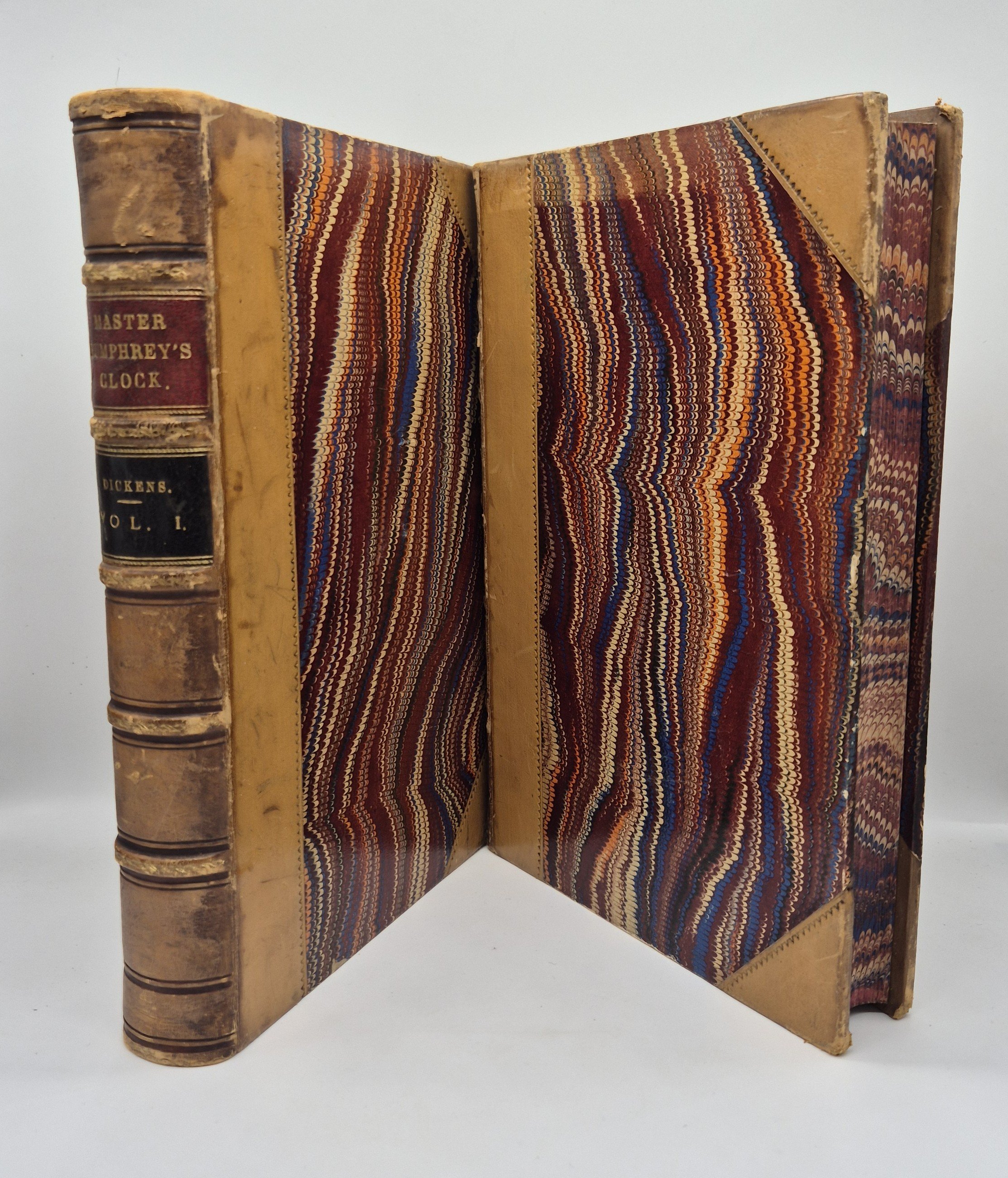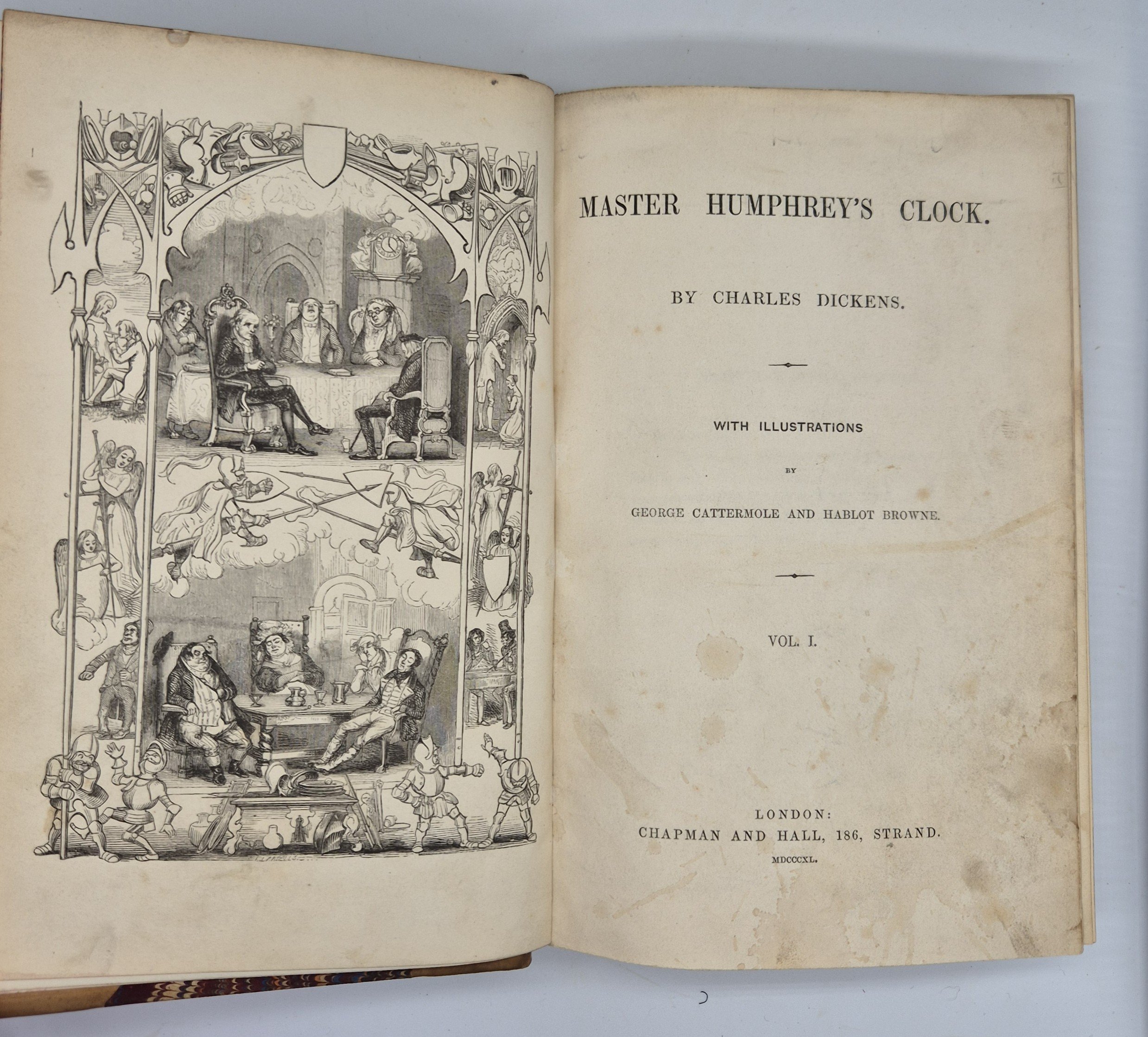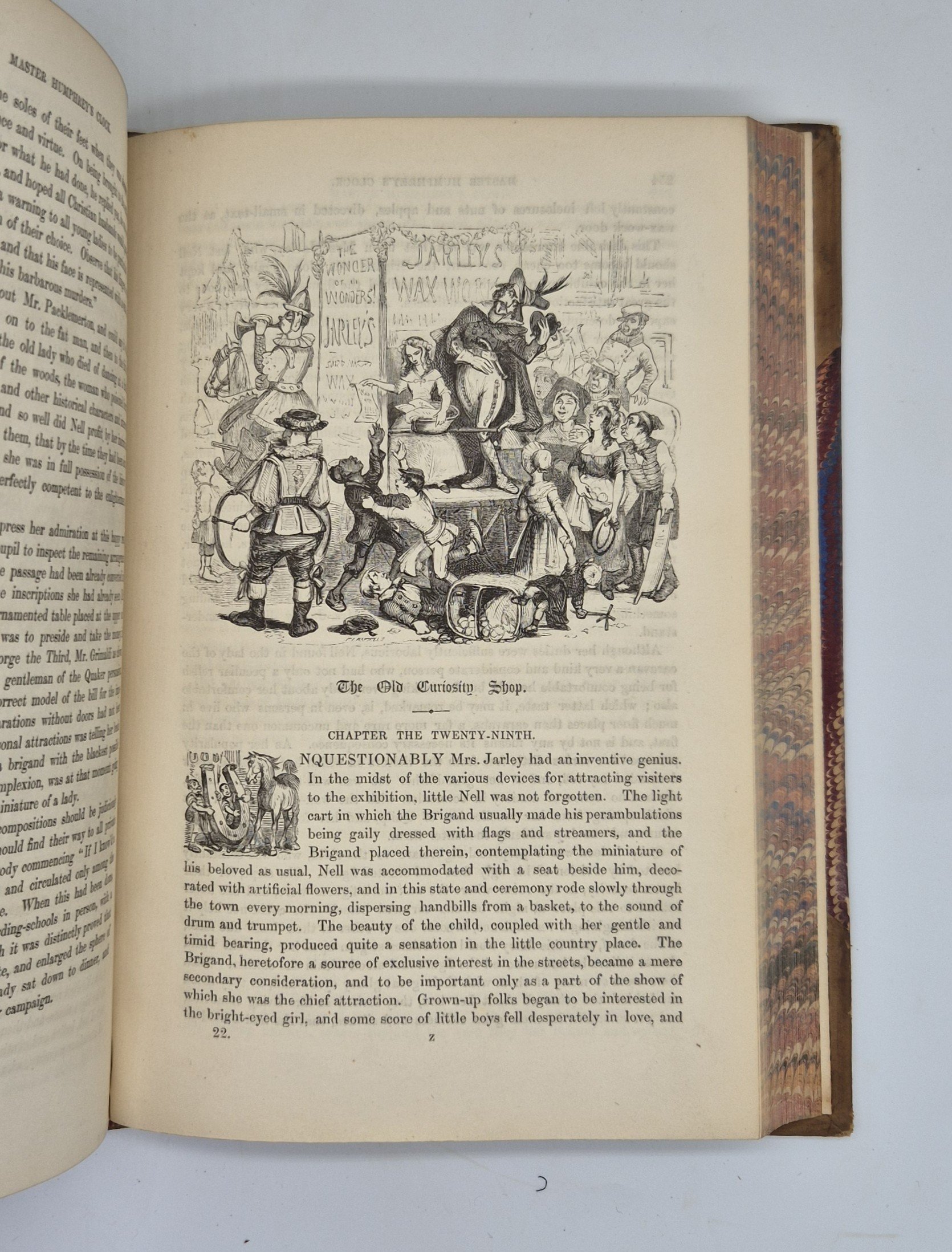



DICKENS, Charles. Master Humphrey's Clock.
London: Chapman and Hall, 1840-41
Large 8vos., 3 vols in 2; late 19th century binding of half tan calf over marbled paper-covered boards; with decorative borders in blind; spine with five raised bands lines ruled in blind and gilt; and two contrasting morocco title labels in black and red to second and third compartments respectively, lettered in gilt; marbled edges and endpapers; pp. [ix], iv, [i], 2-306, [i], 2-228, [ii]; [ix], vi, [i], 230-306, [i], 2-426, [ii]; a very good copy, boards a little rubbed, particularly at spine tips and corners; with some darker marks and scratches to leather; for the most part clean, internally, some foxing to the endpapers, a couple of pencil and pen markings to the prelims; the odd finger tear; small strip of sunning to the upper edge of front board; brown stain affecting p. 168-183 in second volume; p. 168 with closed tear at head; containing numerous in-text illustrations, head and tailpieces by George Cattermole and Hablot Browne; a lovely set.
First edition, bound from the original parts, with Vols I and II bound together. Cattermole designed the original wrappers (here not present), along with two frontispieces, while H. K. Browne (Phiz) provided the 130 woodcuts and 25 initials seen throughout.
A series of loosely-connected essays, written by Dickens, which contain the two longer novels The Old Curiosity Shop and Barnaby Rudge. Beginning with Master Humphrey himself, it recounts the old man’s stories which he shares with a group of friends, and the two central aforementioned novels form the largest part of the sequence, introduced by the narrator before he trails off, stating “now that I have carried this history so far in my own character and introduced these personages to the reader, I shall for the convenience of the narrative detach myself from its further course, and leave those who have prominent and necessary parts in it to speak and act for themselves…”. Tales include stories of murder and lighthearted conversations between talking statues, and reintroduce characters Dickens had previously used in The Pickwick Papers.
Originally issued in weekly parts, the concluding part of The Old Curiosity Shop became famous when fans in America, desperate to find out of the fate of little Nell, stormed the dock bringing the 40th installment to New York. “When the ship bearing the resolution of the series finally docked in New York, a mob desperate to learn the fate of the tale’s protagonist, Little Nell, stormed the wharf…The ensuing scene would make a modern-day publisher swoon: a band of readers passionately demanding to learn how the story ends.” (The Atlantic).
A very smart set.
London: Chapman and Hall, 1840-41
Large 8vos., 3 vols in 2; late 19th century binding of half tan calf over marbled paper-covered boards; with decorative borders in blind; spine with five raised bands lines ruled in blind and gilt; and two contrasting morocco title labels in black and red to second and third compartments respectively, lettered in gilt; marbled edges and endpapers; pp. [ix], iv, [i], 2-306, [i], 2-228, [ii]; [ix], vi, [i], 230-306, [i], 2-426, [ii]; a very good copy, boards a little rubbed, particularly at spine tips and corners; with some darker marks and scratches to leather; for the most part clean, internally, some foxing to the endpapers, a couple of pencil and pen markings to the prelims; the odd finger tear; small strip of sunning to the upper edge of front board; brown stain affecting p. 168-183 in second volume; p. 168 with closed tear at head; containing numerous in-text illustrations, head and tailpieces by George Cattermole and Hablot Browne; a lovely set.
First edition, bound from the original parts, with Vols I and II bound together. Cattermole designed the original wrappers (here not present), along with two frontispieces, while H. K. Browne (Phiz) provided the 130 woodcuts and 25 initials seen throughout.
A series of loosely-connected essays, written by Dickens, which contain the two longer novels The Old Curiosity Shop and Barnaby Rudge. Beginning with Master Humphrey himself, it recounts the old man’s stories which he shares with a group of friends, and the two central aforementioned novels form the largest part of the sequence, introduced by the narrator before he trails off, stating “now that I have carried this history so far in my own character and introduced these personages to the reader, I shall for the convenience of the narrative detach myself from its further course, and leave those who have prominent and necessary parts in it to speak and act for themselves…”. Tales include stories of murder and lighthearted conversations between talking statues, and reintroduce characters Dickens had previously used in The Pickwick Papers.
Originally issued in weekly parts, the concluding part of The Old Curiosity Shop became famous when fans in America, desperate to find out of the fate of little Nell, stormed the dock bringing the 40th installment to New York. “When the ship bearing the resolution of the series finally docked in New York, a mob desperate to learn the fate of the tale’s protagonist, Little Nell, stormed the wharf…The ensuing scene would make a modern-day publisher swoon: a band of readers passionately demanding to learn how the story ends.” (The Atlantic).
A very smart set.
